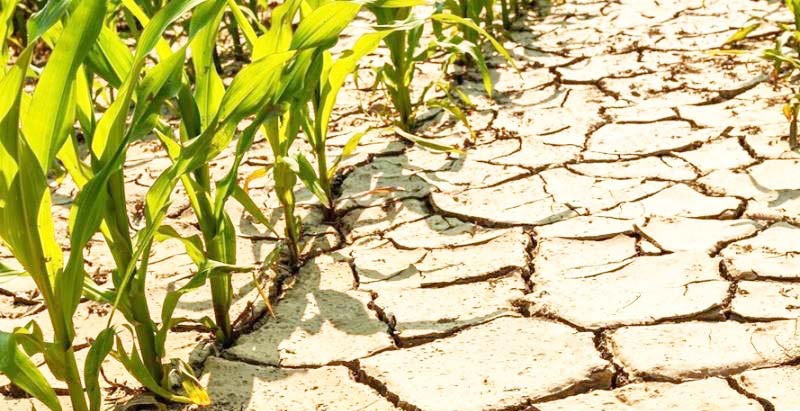The prolonged dry spell in Kashmir over the years has raised concerns among farmers, orchardists, and tourism stakeholders, as these sectors form the backbone of the region’s economy and employment.
The dry winter, with minimal snowfall and rainfall recorded in recent years, has left farmers in worry snowfall is crucial for replenishing groundwater and irrigation for crops and fruit orchards in the coming season.
A snowless winter means reduced soil moisture, which can negatively impact rice, wheat, mustard, maize, vegetable and apple production. The lack of snow cover exposes tree roots to frost damage, leading to lower yields in the following year.
Standing in his apple orchard in Baramulla, Nazir Ahmad gazes at the bare branches, his face etched with worry. This year, like the last, snowfall has been scarce, leaving the earth dry and his hopes dim.
“These past two years have been particularly harsh for us,” he says, running his hand over the rough bark of a tree. “We once harvested nearly 800 boxes of apples from our 15-kanal orchard, but now, production has dropped to nearly half.”
He looks up at the vast, clear sky—devoid of its usual snow-laden clouds. “Kashmir’s weather has become unpredictable. Scorching summers and bone-chilling winters, both extremes, are taking a toll on our crops.”
Nazir remembers when thick layers of snow would blanket the land, slowly melting into the soil, ensuring a healthy harvest. But now, prolonged dry spells and erratic temperatures are weakening apple trees, threatening not just yield but the livelihood of thousands like him.
Apple orchardists said in summer months they face another issue of sudden rains and hailstorms which is also one of the reasons affecting apple orchards in several parts of Kashmir and leaving orchardists worried about the crop produce.
Tousif Ahmad, a vegetable farmer from Pattan said over the years they have faced damage to ripened vegetables in peak months due to weather vagaries.
“We have seen in April, May, and June there are extremes of hot and extremes of cold temperatures that affect the produce which is also a reason why the farmers have seen a decline in crop production,” he said.
Kashmir’s economy is centered around agriculture and traditionally the staple crop of the valley was rice, which formed the chief food of the people.
Tariq Ahmad, a farmer from Budgam said if dry weather continues there would be less germination due to lack of moisture.
“When there is less germination there would be less production. Snowfall is very important when we talk of Kashmir’s agriculture to grow different kinds of crops like vegetables, paddy etc. Every crop needs moisture and when the temperature fluctuates it can impact the growth of agricultural crops,” he said.
He said over the years, Kashmir is witnessing a different trend and people are shifting from paddy to horticulture or growing maize due to lack of water during the season.
Last year also the paddy was affected at many places. Even at some places, farmers had prepared paddy saplings but they could not plant those saplings and sowed maize due to lack of irrigation facilities.
Tariq said precipitation during the winter is important for agricultural land as the rains or snowfall is a sustained source of moisture for upcoming crops.
Winter tourism, another major economic sector in Kashmir, is also suffering. Famous tourist destinations like Gulmarg, Pahalgam, and Sonmarg, did not receive the snowfall which used to be in past years.
Earlier, the second leg of the 5th Khelo India Winter Games, scheduled to begin in Gulmarg on February 17, 2025, was postponed due to insufficient snowfall in the region.
Javid Ahmad, a tourist guide from Tangmarg said hundreds of unemployed youth are associated with winter tourism in Gulmarg and its adjoining areas and it has become a source of livelihood for them.
“Over the year there has been deficit snowfall which affects not only the fragile ecosystem but also the livelihood of people. Tourists will come only when there is snow in winter and natural beauty in summer months. If the dry weather continues there would be no water and how can people have greenery,” he said.
Notably, Jammu and Kashmir has been experiencing a significant rainfall deficit, with an overall shortfall of 80 percent in the past three months.
According to the MeT department, January was the driest month in recent history, recording a drastic 91 percent decline in both snowfall and rainfall. This sharp reduction has sparked serious concerns about water availability, agriculture, and the overall ecology of Jammu and Kashmir, which heavily depends on winter precipitation.
By February 12, all districts of J&K reported a severe precipitation deficit of 70–80 percent, threatening agriculture by reducing soil moisture and water replenishment.
This prolonged dry spell has raised concerns among farmers, horticulturists, and environmentalists, as it threatens water availability, agricultural yields, and the region’s fragile ecosystem.
Experts warn that if this pattern continues, it could disrupt Kashmir’s delicate ecological balance and water availability in summer. They suggest urgent measures like sustainable water management, afforestation to mitigate the long-term effects of changing weather patterns.
“Still the impact of climate change is not that much in Kashmir. There are countries and regions across the globe which witnessed floods and people faced water crisis and they had to leave and settle somewhere else,” said Ajaz Ahmad, an environmentalist.
The expert said that Kashmir’s economy heavily depends on water resources originating from glaciers, which serve as a lifeline for agriculture, horticulture, and hydropower generation.
“Any change in these water resources directly impacts these key sectors, disrupting livelihoods and threatening the region’s economic stability,” he said.
He also noted that the effects of climate change are becoming increasingly evident, as rising temperatures and altered precipitation patterns have forced many farmers to convert traditional paddy fields into orchards in an attempt to adapt to the changing climate.








